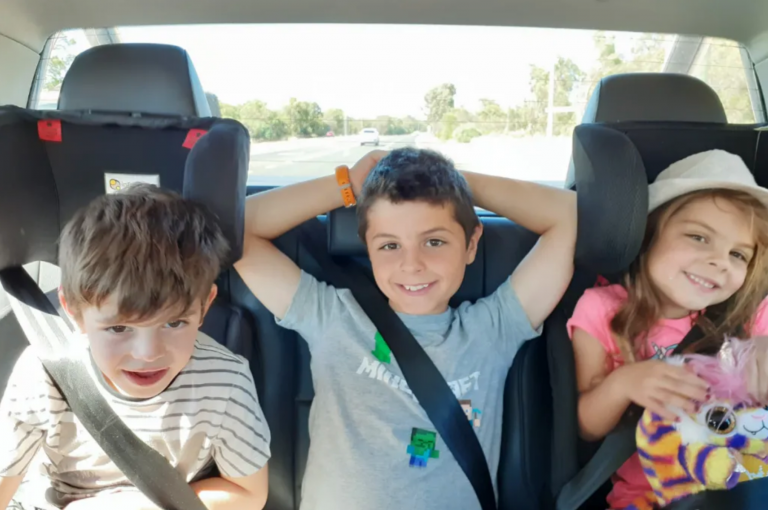Does your company offer your parents and caregivers a truly meaningful employee benefits package? One that fosters wellbeing, connection, and community, and meets the needs of your employees.
Now more than ever, it’s important that your employees feel appreciated and valued – not only to attract and retain top talent but to keep your team healthy and happy.
To explore this, Circle In Co-Founder, Jodi Geddes sat down with Senior Manager, Talent Acquisition and Co-Chair of Gap Parents at Gap Inc., Stacey Newsom, to find out how their benefits package strikes the right balance. Plus, leading behavior and parenting expert, Jason Gibson weighs in on why investing in parents – especially during the moments that matter – pays dividends.
How are working parents really coping?
When people struggle, they tend to keep this off their social media feed. The same can be said for working employees; they are suffering behind closed doors, some wiping tears from their faces before their next Zoom call.
Jason shared that some parents working remotely have never felt worse, lonelier, or more isolated. For introverts, working from home is more conducive, so the responsibility is on employers and HR personnel to find the right balance and support all their employees.
‘The struggle is because one person’s pleasure is another person’s pain. We’re trying to work with everybody the same in the corporate environment. It’s not the same at all.’ – Jason Gibson, ParentTV
Stacey from Gap Inc. echoed this, pointing out that the challenge is trying to find balance whilst fostering a sense of connection and community amongst employees, regardless of what location they are working from – be it headquarters, contact centers, or retail stores.
The panel agreed that when talking about talent retention and attraction of new team members, it’s vital to understand that 1 in 3 employees are considering leaving their current employer. Jodi highlighted that women, in particular, are leaving the workforce in higher numbers than ever, so retention has to take priority and employee benefits are essential to this.
Research shows a deeper picture
Circle In conducted a survey of over 450 caregivers and found that:
Current caregiver experiences
- 9/10 say family is more important than work
- <50% feel a sense of belonging at work
- 7/10 say they are not coping
- 1 in 3 are thinking of leaving their current employer
Family Benefits are an expectation
- 658% increase in CEOs talking about issues of equity, fairness, and inclusion since 2018
- 76% of employees and job seekers say a diverse workforce is important when evaluating companies and job offers
Strengthen retention
- 2021 McKinsey research found that parents were more likely to have left their jobs than non-parent colleagues
- Parents cited caring for family in their top 5 reasons for leaving their job
Enable leaders
- Managers account for a 70% variance in employee engagement and experience
- Leveraging technology to strengthen the relationship between employees and managers is key—companies with well-integrated tech experience 47% less attrition
What do organizations need to do?
How do you make sure that you’re not only attracting the best talent but that you’re keeping them? A supportive environment is vital. This means creating an environment where people feel comfortable asking for help, giving feedback, and being part of the development of internal policies and groups that foster community. It also means providing opportunities for growth and development.
When employees feel supported, they are more likely to be engaged and invested in their work.
Cost v Investment
Jodi acknowledged that a lot of organizations may want to do more but feel they just don’t have the budget to provide such resources and benefits to their employees and feel stuck on where to start. Research shows that when people are seen as an investment rather than a cost to organizations, everyone benefits. Staff are more engaged, take less sick leave and have longer tenures.
Jason reiterated that you are either investing in your people or waiting for them to fail (and leave). From an organizational perspective, there are only two approaches: to invest in and improve the family lives of employees or have a ‘wait to fail’ model. There’s no in-between.
‘It’s easier to blow out a match than a forest fire. And when we can make that early investment to the lives of those that are part of our organization, then we start transforming families, and when you’re transforming families we are transforming communities.’ – Jason, ParentTV
How Gap. Inc is leading the way
Gap has a highly successful Employee Resource Group (ERG) named Gap Parents. With over 700 members and growing weekly, it provides a safe peer support space for working parents to feel connected to each other and build community. Stacey said you don’t have to be a large organization to get an ERG up and running.
“It’s a grassroots approach. It takes employees who are passionate about bringing groups together.’ – Stacey, Gap Inc.
For holistic support, all staff have access to the Circle In platform with over 700 resources on topics ranging from child and adult mental health, caring for others, and our employees to grieving a loss or experiencing stillbirth.
To promote well-being and fitness, employees have access to a range of virtual classes from yoga and meditation to HIIT and boot camp. Additionally, each family member of an employee can access gym memberships and discounts.
Employees who are becoming parents, benefit from 12 weeks of paid parental leave, eligible after just six months of employment. Last year saw the expansion of their Adoption Assistance Program to include Surrogacy Assistance, providing financial support for employees who wish to expand their families.
Once parental leave is concluded, a structured return to work coaching program and backup child care is available to assist in the transition. Knowing these resources are available when parents return to work provides a sense of relief for people on parental leave so they can truly disconnect from work and focus on their family and reduce anxiety and stress.
Any child in the care of employees has access to free tutoring from preschool to college-age students, to holistically support more work/life balance and include better outcomes for families overall.
To measure the effectiveness and satisfaction of these benefits, evaluation surveys are sent out to the company to capture what’s working and what isn’t and provide an opportunity for feedback.
Storytelling to break barriers
Storytelling via the Circle In platform has been Gap’s most powerful tool. It breaks down barriers between management and employees and provides lived and shared experiences that bind people together. Whether that is an executive sharing their infertility journey, a team member sharing about being a caregiver of elderly parents, or a child with a disability, it shows others that it’s okay to discuss this at work and fosters a culture of openness, and understanding, inclusion, and empathy.
‘I think those connection points are what really connects people and makes people more relatable, whether they’re working in an office or connecting with them on Zoom.’ – Stacey, Gap Inc.
Circle In has developed a comprehensive family benefits package to help you reflect on your current offerings and policies and build a more holistic support experience for your workplace. You can download it here.
To view the on-demand webinar in full here.
If you’d like to learn more about how you can support your employees, click here to talk to us today.


